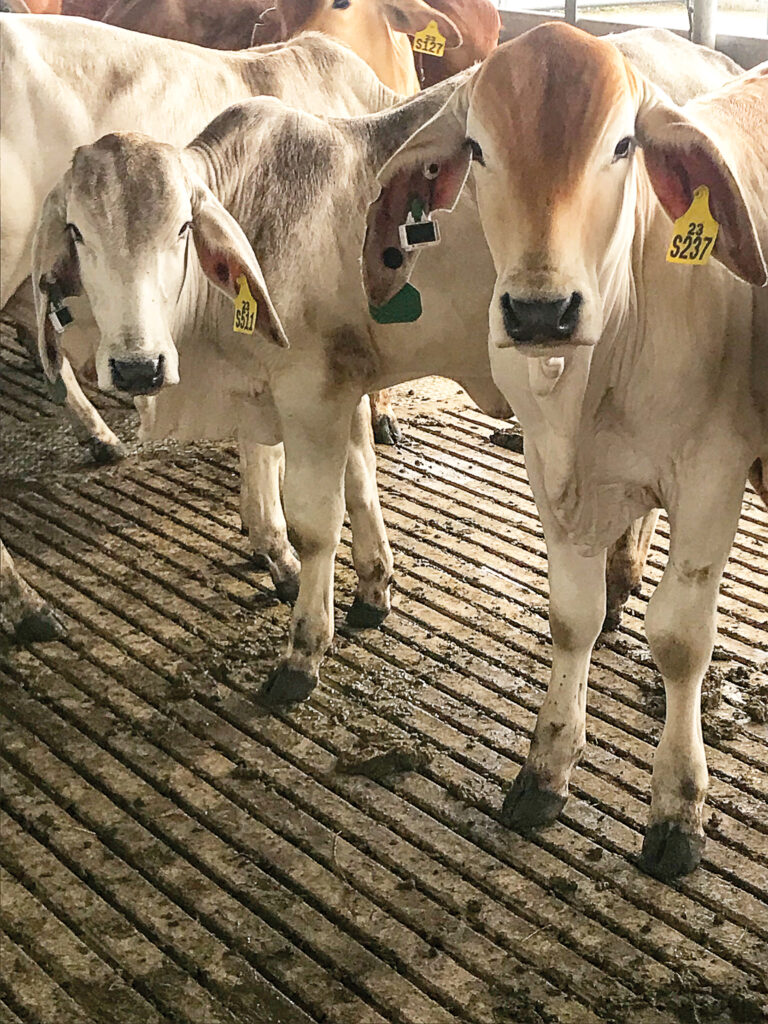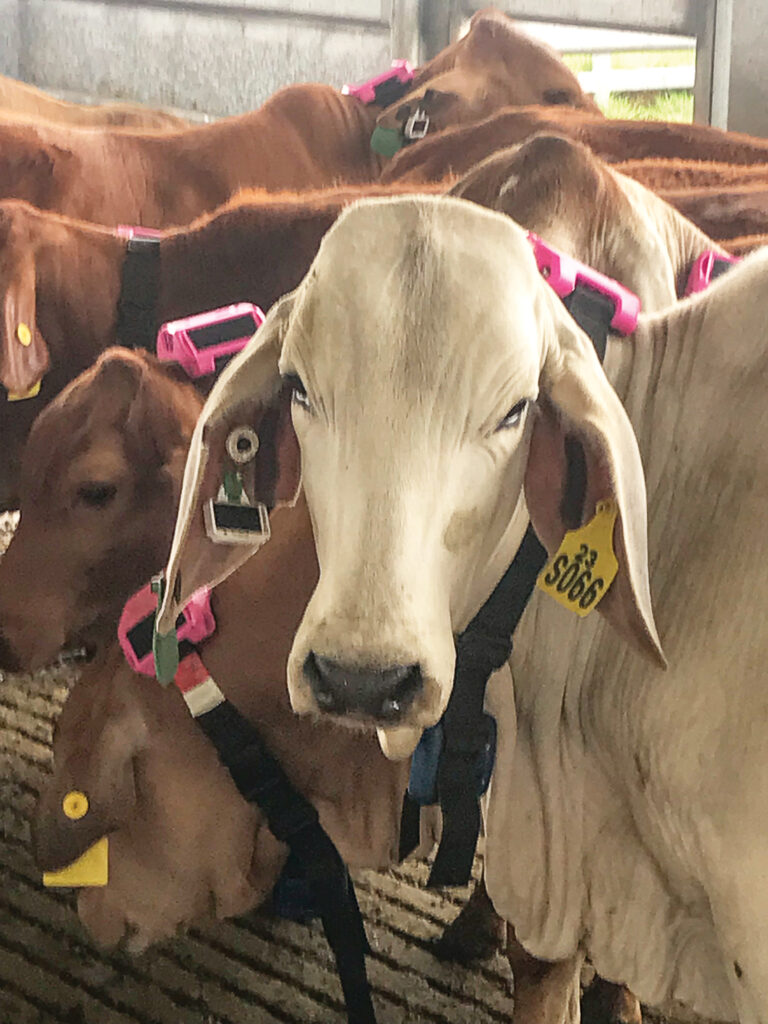Written by John Croaker; photos supplied by John Croaker
A new phase of work has commenced recently with the deployment of Ceres smart ear tags onto 122 Spyglass No 23 Brahman steers at Warraka, Taroom.
Ceres tags are equipped with accelerometer and GPS positioning technology and communicate with a series of low-level satellites to upload data on animal location, behaviour, and movement. Ceres Tag have a license from CSIRO, Australia’s national science agency to use the eGrazor technology which interprets the accelerometer data into animal behaviour characteristics, time grazing, resting, ruminating, walking, drinking, other.

Research conducted by CSIRO and NSW DPI has shown that dry matter intake can be predicted using the animal behaviour relationships. Thirty of the Brahman steers with Ceres tags and 30 Droughtmaster steers, some with Ceres tags have been transferred to University of Queensland, Gatton where they have also been fitted with CSIRO eGrazor collars. Animal behaviour observations will be recorded, and refinements will be made to the eGrazor algorithms which characterise the animal behaviours. The refinements will then be applied across all the tags.
The tags will remain on the Spyglass No 23 steers until May 2024. Interim weights as well as a final weight will be taken and the data, along with daily animal behaviour profiles and estimated DMI data will be analysed and feed efficiency values calculated.
The tags will be transferred to the Brahman and Santa Gertrudis Brian Pastures No 23 steers in May and additional daily animal behaviour and estimated DMI data will be collected. Starting, interim and final weights will also be collected.

The same process will then be followed with the Spyglass and Brian Pastures Brahman and Santa Gertrudis No 24 steers.
The Spyglass No 23 steers at UQ Gatton will spend 4 weeks grazing pastures wearing the eGrazor collars. In January next year they will commence a feedlot trial with Growsafe feeders which measure individual animal feed consumption also wearing eGrazor collars.
This is the second trial of this nature that we have conducted at UQ. The first with the Spyglass No 22 steers, which finished earlier this year showed that the feedlot feeding behaviour classification is different to grazing behaviour classification. This required major amendments to the eGrazor algorithm to accommodate a feedlot situation.
The Growsafe system is the industry standard for measuring feed intake and BREEDPLAN analysis of the feed efficiency Net Feed Intake trait. NFI values will also be calculated using Ceres tag DMI data and weight gain performance and corelated with Growsafe derived NFI values.
In an allied project run by University of Queensland Professor Ben Hayes, Greenfeed methane measurement units will also be used in the final phase of the Growsafe feeding trial to collect data on actual methane output. This will be correlated with methane output data calculated from the Ceres tag DMI values. This is the second project in which we have worked with Professor Hayes. The Greenfeed methane measurement data on the No 22 steers earlier this year showed a good correlation between improved feed efficiency and reduced methane output.
Because we have a genomic sequence on all the trial animals, the aim is that when we have a sufficiently large number of records, we will be able to produce a grazing feed efficiency genomic EBV.
Ceres tag and eGrazor DMI data is estimated based on animal behaviour profiles, rather than a direct measurement. On herd population basis much larger numbers of records can be collected at a lower cost which will improve the accuracy of the data for the sires and dams involved.

